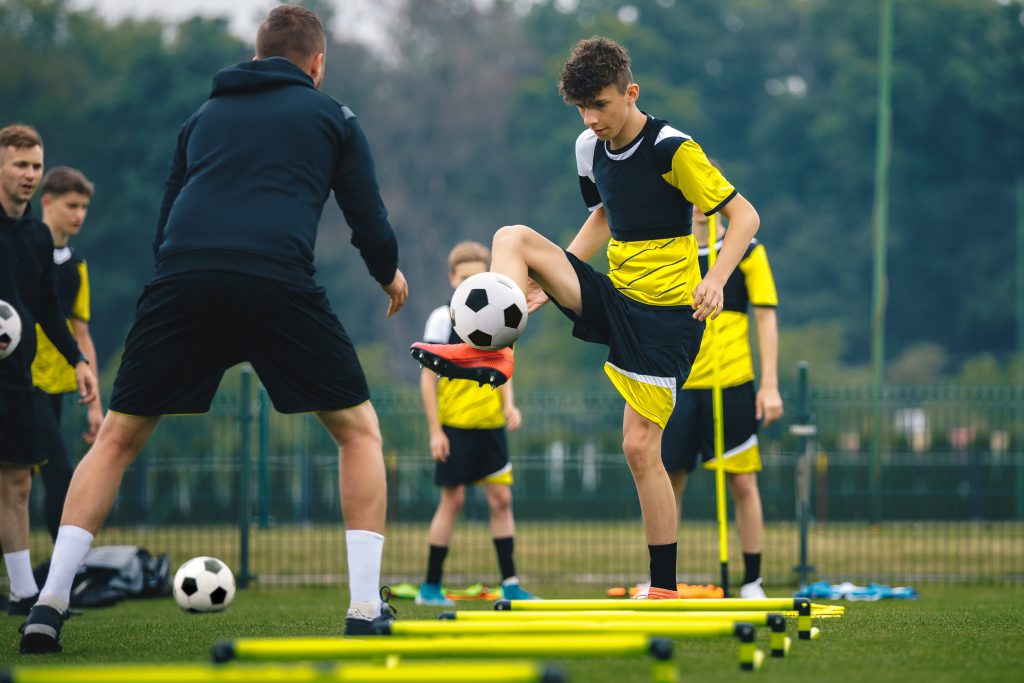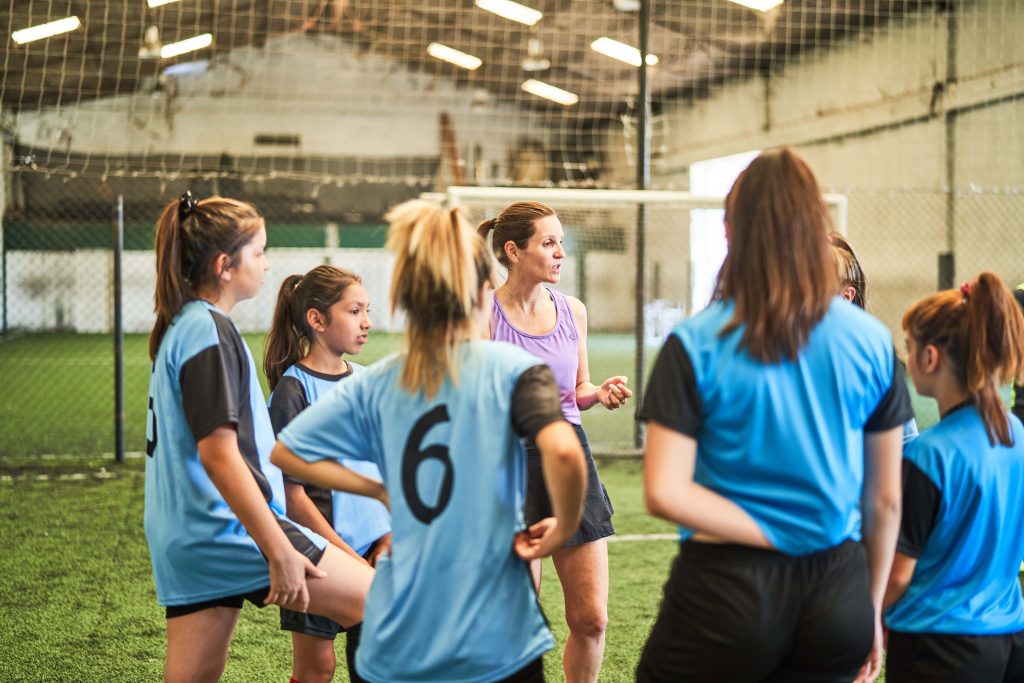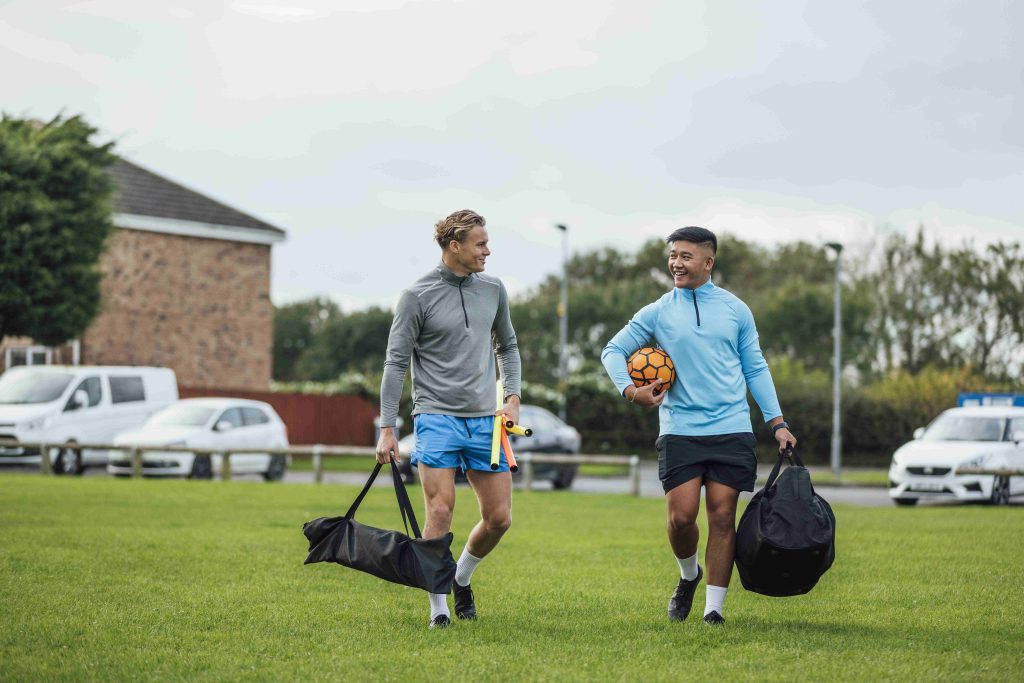As a football coach, you may not realise just how many hazards are associated with your sessions. Failing to spot these hazards could lead to a serious accident occurring or a claim being made against you.
If this happens and you make a claim under your football insurance policy, one of the first things we’ll ask you is whether you carried out a risk assessment prior to the incident occurring. If you didn’t, it would be difficult to defend a claim against you and in some cases may affect the cover under your policy.
Therefore, it’s vital that you carry out a thorough risk assessment which considers everything that could go wrong. We’ll take you through the steps to complete a risk assessment before your next football coaching session.

Step 1: Identifying the hazards
When you start recording all the potential hazards involved in a football session, you might be surprised. Here are some common examples:
- Playing conditions, i.e. an uneven surface, potholes, extreme weather, pitch flooding
- The actions of players, i.e. dangerous tackles or accidental collisions which could cause injuries, a shot which could damage third party property
- The potential for a goalpost/goalposts to collapse
- The potential for a player to collide with or trip over a goalpost
- Inappropriate footwear, i.e. boots not having the right studs
- Inadequate protective equipment, i.e. players not wearing shin pads
- Jewellery which could cause injury to the wearer or others
- Flag posts being too close to the pitch on the halfway line, under 5 foot high or with a pointed top
Step 2: Point out who this could affect and how
Once you’ve recorded these hazards, you then need to identify who they could affect. Is it just the players or is it also the coaches? Could local residents or building owners be affected if, for example, a wayward shot ends up with a ball breaking a window?
Within most risk assessment templates, there will be a column for hazard description and a column next to this for ‘persons exposed’. Establishing the severity of each hazard and who it affects will enable you to take appropriate action, which we’ll cover in our next point.
Step 3: Determining the level of risk
After identifying the hazards within your sessions, you need to give each hazard a risk rating to determine its likelihood and impact.
You can do this in one of two ways. You can measure the risk numerically, using the quantitative risk analysis method. Or you can classify it on a descriptive scale of low, medium or high, applying the qualitative risk analysis method.
Quantitative risk analysis is the more commonly used method when conducting a risk assessment, but which method you use is entirely up to you.
Here are the typical definitions you would use to calculate the level of risk, using both the quantitative and qualitative metrics:
- 1 (Very Low): Highly unlikely to occur. May occur in exceptional situations.
- 2 (Low): Most likely will not occur.
- 3 (Moderate): Possible to occur.
- 4 (High): Likely to occur. Has occurred in the past.
- 5 (Very High): Highly likely to occur. Has occurred in the past and conditions exist for it to occur again.
The rating you assign each hazard will then determine the control measures you put in place.

Step 4: Putting control measures in place
Control measures are essentially the actions you’ll take to minimise or eliminate risk. Here are some examples of control measures you would propose when filling out your risk assessment:
- If you feel that the pitch is in a potentially unplayable condition, the control measure would be to speak to the resident groundsman prior to training or matches. In extreme circumstances, you may want to cancel a game/session or find another venue.
- If you’re concerned that the balls you’re using are not at the right pressures and could cause a foot or head injury, the control measure would be to ensure the balls are pumped to the appropriate pressure and throw away any balls when their leather starts peeling off.
- If you’re worried about players colliding with or tripping over a goalpost, the control measure would be to push the goalframe up against a fence and let the players know you’ve repositioned it.
If you put these control measures in place, the remaining risk should be ‘as low as is reasonably possible’ (ALARP).
In addition to the basic control measures listed above, you may want to enforce multiple control measures to further minimise risk. For instance, in addition to checking your player’s boots are appropriate for the surface they’re playing on, you might want to remind them to check their studs regularly.
Doing this not only further eliminates the possibility of a serious accident occurring but also demonstrates to your players that you’re on the ball.
Step 5: Reviewing and revising your risk assessment
Once you’ve done the above, it’s essential to review the effects of these measures and revise your risk assessment if needed. Each time you hold a training session, you should judge whether your risk assessment encompasses everything that could go wrong.
If you employ five or more football coaches, by law you need to record in writing the main findings of your risk assessment. You should also regularly check in with them to review the procedures they’re following and the effectiveness of these procedures.
Likewise, if you’re using new equipment or running training sessions in a venue you’ve not used before, these need to be reviewed for their level of risk.

FAQs
What is a risk assessment in football?
Carrying out a risk assessment before a football training session or match helps to ensure that players, coaches, and spectators safe. They usually involve identifying potential hazards, rating their likelihood to occur, and then recording any preventative measures taken.
What are the 5 things a risk assessment should include?
There are five key steps you’ll need to complete to carry out a thorough risk assessment, these are:
- Identifying the hazards
- Recognising who these hazards could affect and how
- Deciding on the level of risk posed by the hazards
- Implementing any control measures which will reduce the level of risk
- Reviewing and updating the risk assessment periodically

Specialist football insurance through Insure4Sport
Carrying out a full risk assessment can help prevent accidents from happening in your sessions. However, you may also want to consider getting specialist football insurance to provide financial protection and peace of mind should the worst happen.
Specialist football insurance through Insure4Sport includes public liability, personal accident, and sports equipment cover. Find out more about specialist football insurance or get an instant online quote today.





Leave a Reply